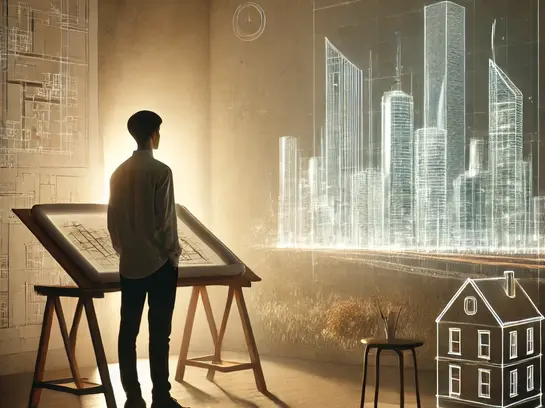Architecture has always been a reflection of its time—of culture, technology, and vision. And right now, we’re standing at the edge of something transformative.
AI isn’t just another tool. It’s a shift. A moment. A chance for architects to help shape what comes next.
Why AI is Transforming Architecture
Across the industry, AI is beginning to influence how we think, plan, and create. It’s not about replacing creativity—it’s about elevating it.
Architects who embrace AI aren’t giving up control. They’re gaining new dimensions. From analyzing complex data to generating design options we never thought possible, AI opens doors that used to take weeks—or never opened at all.
This isn’t about shortcuts. It’s about expanding what’s possible.
Benefits of AI in Modern Architectural Design
Speed with Substance
AI helps streamline repetitive tasks so you can focus on the real work: decision-making, creativity, and vision. What used to take weeks can now happen in hours—with deeper insight behind every move.
Smarter Sustainability
Today’s architects are designing not just for beauty, but for impact. AI tools can optimize energy use, suggest greener materials, and help you make sustainability a core part of every design.
Clarity and Confidence
AI reduces the unknowns. It helps spot design flaws early, forecast outcomes, and navigate complexity—so you can move forward with more confidence, not just more data.
Design That Fits, Every Time
Whether you’re designing for a client, a community, or a city, AI enables more tailored outcomes. It adapts to specific needs, behaviors, and goals—without compromising creativity.
True Collaboration
AI-enhanced BIM and design tools make it easier to work in sync with engineers, contractors, and clients—bringing everyone into the process with greater clarity and alignment.
Key Applications of AI in Architectural Design
Generative Design
By setting constraints and goals, AI can generate dozens (or hundreds) of design options—each one optimized for performance, sustainability, or space. It doesn’t replace the architect. It gives them more to work with.
Urban Intelligence
With AI, architects can analyze city data—traffic flow, energy use, population trends—to design smarter buildings and neighborhoods that fit the world they exist in.
Visualization Tools
AI-powered rendering creates immersive, photorealistic visuals in record time—giving clients a true sense of what’s coming and helping stakeholders make faster, better decisions.
Built-In Compliance
AI tools can scan designs against building codes, zoning rules, and safety regulations—saving time, reducing risk, and removing uncertainty from the approval process.
The Role of the Architect in the Age of AI
We get asked this a lot: Will AI replace architects?
The honest answer? No. But it will reshape what it means to be one.
Architects won’t be replaced—they’ll be redefined. Those who lean into AI will find themselves leading the next phase of the profession, not chasing it. Because design is still—and always will be—a human act. A creative one. One that requires perspective, judgment, and vision.
The architect’s role is evolving. And that’s not a loss—it’s a powerful shift, as reflected in younger architects who are stepping into this new era.
This Is a Defining Moment
The future of architecture is not being handed to us. It’s being shaped—by those willing to explore, question, and create with new tools.
AI for architecture isn’t about working faster. It’s about working smarter, leading with purpose, and designing for what’s next—just as we explored in how technology is already reshaping the profession.
This is more than a tech shift. It’s a mindset shift. And the architects who embrace it will help define the next era of design.
This is about stepping up to shape what architecture becomes next—and being part of the group that leads it forward.








